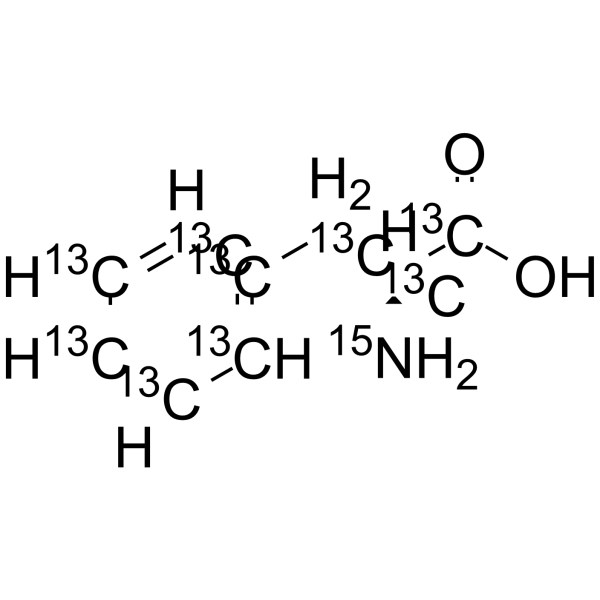878339-23-2
| Name | Phenylalanine-ul-13C,15N |
|---|---|
| Synonyms | L-Phenylalanine-13C9,15N |
| Description | L-Phenylalanine-13C9,15N ((S)-2-Amino-3-phenylpropionic acid-13C9,15N) is the 13C- and 15N-labeled L-Phenylalanine. L-Phenylalanine ((S)-2-Amino-3-phenylpropionic acid) is an essential amino acid isolated from Escherichia coli. L-Phenylalanine is a α2δ subunit of voltage-dependent Ca+ channels antagonist with a Ki of 980 nM. L-phenylalanine is a competitive antagonist for the glycine- and glutamate-binding sites of N-methyl-D-aspartate receptors (NMDARs) (KB of 573 μM ) and non-NMDARs, respectively. L-Phenylalanine is widely used in the production of food flavors and pharmaceuticals[1][2][3][4]. |
|---|---|
| Related Catalog | |
| In Vitro | Stable heavy isotopes of hydrogen, carbon, and other elements have been incorporated into drug molecules, largely as tracers for quantitation during the drug development process. Deuteration has gained attention because of its potential to affect the pharmacokinetic and metabolic profiles of drugs[1]. |
| References |
| Melting Point | 270-275 °C(dec.)(lit.) |
|---|---|
| Molecular Formula | 13C9H1115NO2 |
| Molecular Weight | 175.11600 |
| Exact Mass | 175.10600 |
| PSA | 63.32000 |
| LogP | 1.34130 |

